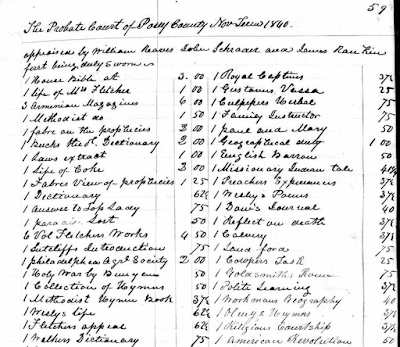One of the big features announced at RootsTech last month was Ancestry's Networks. This feature is currently in Beta and available to those with Ancestry's Pro Tools membership. Networks allows you to create a private workspace to collect and organize information on groups of people who may be connected through a particular event, such as military service, passengers on a voyage, a community enumerated in a census record, a religious group or sports team, among others. There are many possible uses for the Networks tool. At RootsTech, some of the examples mentioned were to collect in one space members of the same World War II company and build out their stories, or to follow a group of immigrants from the same ship as they settled in other locations in the United States. Crista Cowan from Ancestry has shared a Tips and Tricks Virtual Event (YouTube) highlighting ways to use the new Networks feature.
For my first test drive with the Networks tool, I've created a network to gather information on all the witnesses and defendants in the 1865 murder of Captain John A. Thornhill of the 9th Tennessee Cavalry. This is a case I've long thought about compiling into a book, and more recently wish it could be made into a limited series for a streaming service. I think this is the perfect example to put the Networks tool to work. There's a large number of people involved, with hundreds of pages of documents scattered across various county court cases, military courts and service records, a Tennessee Supreme Court case and a US Supreme Court case, newspaper articles, witness testimony, census records, diary entries, even a letter from the desk of President Andrew Johnson. There's a real cast of characters involved in this complex story, and I am hoping the Networks tool will help sort them out.
 |
| Ancestry Networks example, Apr 2025. |
A cool feature is the ability to create Stickie notes. This enables a quick at a glance view of important notes for the Network. A nice addition would be the ability to allow users to drag and drop or reorder the Stickies dynamically on the page.
 |
| Example from Ancestry Networks. |
Clicking into a Stickie, one can tag or link stickies to people in the network. For example, below is a screen shot from the Rankin v State stickie, and I've added Samuel E. Rankin as a person of interest with this case. Currently Stickies can only be viewed by the network owner, but maybe in the future Ancestry will make these searchable or shareable. The Stickie note feature is really great and I hope that Ancestry enables that for regular users outside of Pro Tools. Within the Stickie note feature, you can use it to create "To Do" lists. My use will definitely evolve as I work more with it.

I've shared some initial feedback to Ancestry through a survey link they have at the top of the networks page. I am hoping they add the ability to create sub-networks within the main network. In my current example, this would allow me to separate the men of the 9th Tennessee Cavalry involved in the case from those who were just part of the regiment, or group the witnesses and family members of Thornhill and separate them from the defendants.
Some other uses that I see for this tool is to use it with groups of DNA mystery matches, potentially in place of a floating tree. I might try to create a Network in LaSalle County, Illinois connecting the Irish immigrants enumerated in the 1850 US Census to find potential links to my 3rd-great-grandmother Bridget.












































